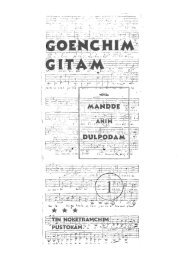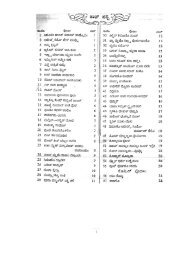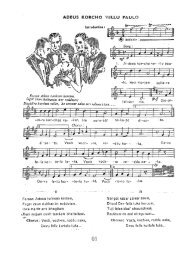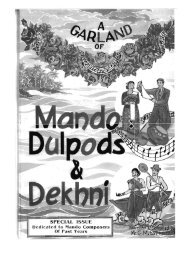Booklet - Songs from Goa
Booklet - Songs from Goa
Booklet - Songs from Goa
Create successful ePaper yourself
Turn your PDF publications into a flip-book with our unique Google optimized e-Paper software.
~--. --~ .<br />
This type of playing of the Gumott only plunges the sublime<br />
flavour ofthe Manda to the grade ~f any common folk-song of<br />
the streets and exhibits unawareness on the part of the<br />
players.<br />
The remarkable requisites to lift up the sublime gaiety of the<br />
Mand6 and especially of the Manda -dance are the volcanic<br />
Du/podam on varied subjects sung in a (;hain one after the<br />
other with the melody either on the same key-signature in<br />
continuation or on a suitable alternate key <strong>from</strong> one<br />
DULPOD to another.<br />
The Time-Signature for the Du/podam is 6/ e , with a<br />
successive crescendo that later on nearing the end changes<br />
to 2/4, consequently and relentlessly testing the skills of the<br />
Gumott player to adjust to the changing rhythmic tempo of<br />
the melody and to display his dexterity in guiding the same to<br />
perfect harmony.<br />
For the 6/ e Time-Signature, the beats of the Gumott are as<br />
follows:<br />
!::IHL<br />
'''n.p,~,<br />
liiiiiiliiiiiifjg<br />
~'lF<br />
~r~:r:I·:!'·4·mA'-T'B±-'n·I;j;1:1t·<br />
MEDIUM'" "" • _ 'I.<br />
... .. T .<br />
~I SOFT'" •• ; •••••••• __•••••••• ~_<br />
The starting beat is outside the melody that willi start <strong>from</strong> the<br />
next bar and is called the "introductory beat" to the<br />
Du/podam.<br />
Many GUlnOti players take all the three quavers of the upper<br />
half of the introductory bar for the introductory beat, for<br />
example:<br />
22
















